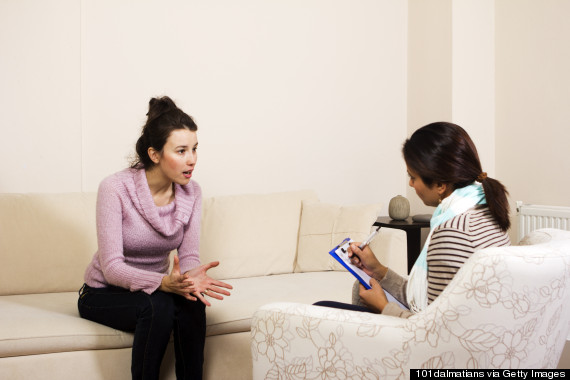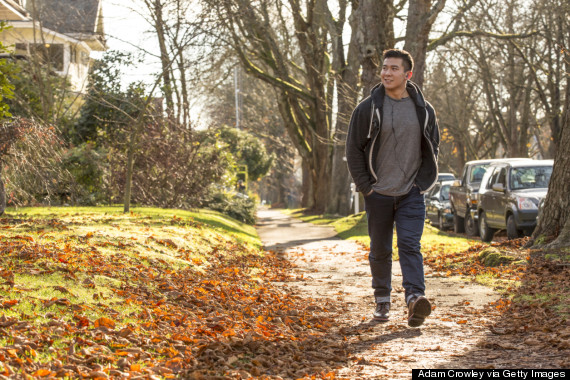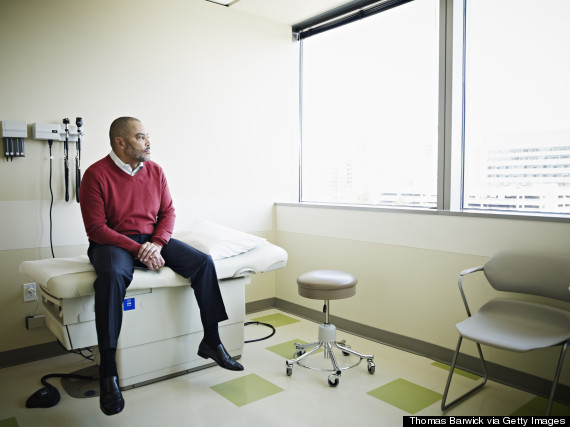Depression Is Not One-Size-Fits-All, And Neither Is The Treatment.
Living with depression can be overwhelming enough, but when it comes to figuring out treatment, the weight of the disorder seems to increase exponentially.
For many, the physical symptoms of depression take precedence when seeking medical care because they’re the most prominent pain. Not to mention, the overwhelming nature of the emotional symptoms can make people want to withdraw altogether.
Plus, what works for some people may not be the best avenue for others. “There are many causes of depressions and there are different symptoms that cluster together,” John F. Greden, M.D., executive director of the University of Michigan Comprehensive Depression Center, tells The Huffington Post. “And because there are many causes, one size treatment will never fit all.”
One way to find help is through psychotherapy. However, even within psychotherapy there are a number of options, which can make it challenging to discover what works best for you or a loved one. “The principles of psychotherapy are to deal with repetitive circumstances that make people think negative thoughts, have negative feelings and behave very negatively,” Greden says. “If used properly by the right people, with the right training, these are very helpful approaches to treating depressions.”
Greden stresses the importance of speaking with a doctor in order to find the right treatment, but in an effort to make understanding the process a little easier, he breaks down some of the different psychotherapy approaches below.
Cognitive Behavioral Therapy

One of the more well-known and evidence-based treatments, CBT focuses on the thoughts you’re having and the behaviors that happen as a result of those thoughts. “Psychotherapy tends to focus on changing those thinking patterns,” Greden explains. “Cognitive behavioral therapy is basically combining strategies that have you think differently about situations you’re in and behave differently [in response to those thoughts] with the goal of having those changes make you feel better.”
CBT also typically gives homework assignments in addition to the work in therapy in order to find ways to solve problems. CBT methods may be tailored to a range of disorders, including anxiety, depression, eating disorders and bipolar disorder. “It tends to change the framework, cuts off the rumination and [helps you] feel better,” Greden says. “CBT can be very effective when coupled with medication or the right treatment plan.”
Dialectical Behavioral Therapy

Developed by psychologist Marsha Linehan, DBT was created predominantly for those who also have been diagnosed with borderline personality disorder and for those with strong suicidal thoughts, Greden says.
While no form of psychotherapy is necessarily best, Greden says this method does have solid benefits because of its tailored focus on individuals who are struggling with depression along with other mental health issues. Research suggests that DBT can reduce suicidal tendencies for those with borderline personality disorder, according to the National Alliance on Mental Illness.
Even though DBT employs some of the same concepts as CBT, what sets it apart is its focus on validation. Patients are encouraged to “accept” uncomfortable thoughts, feelings and behaviors in order to make the process of changing more bearable.
In DBT, therapists may also emphasize meditation, breathing exercises or mindfulness practices as a way to respond to (and eventually prevent) negative stressors, according to Greden. “The strategies were developed to give people some tools in their tool kit and help individuals who didn’t perform well with CBT to stick with treatment,” he says.
Interpersonal Therapy

This type of depression therapy was developed as a short-term treatment for those with less severe forms of depression but can be modified to last longer for patients with recurring depression.
IPT places more emphasis on the social connections you have and focuses on how to more effectively communicate and relate to others. “It’s much more focused on people who are struggling because their relationships are going badly,” he explains. “Since those are very common causes of stress, there’s value in that.”
According to the World Psychiatry Association, IPT is broken down into three phases where the therapist identifies patterns in previous relationships, discovers the patient’s capacity for intimacy and evaluates their current relationships before coming up with a focus for treatment. Unlike in CBT, patients are usually not given any formal homework, but they are tasked with the goal of addressing and solving interpersonal problems.
Other areas of support

In addition to trying therapy, experts also recommend making lifestyle changes in order to fight depression. A recent study published by the journal Ecopsychology even found that just spending some time walking in nature can have positive mood benefits for those suffering from the illness. Exercise, eating habits, alcohol and drug use are all outside factors that should be evaluated and worked on during the course of treatment, Greden says.
What’s the best treatment route?

Just as depression and other mental illnesses aren’t universal experiences, treatment paths aren’t either, Greden says. The best way to determine the right method is by a thorough evaluation from a clinician.
“The question [loved ones and doctors] should be asking is, ‘What does this person need to cope with and get rid of their depression?'” Greden says. “In some cases, that’s using several different approaches … Studies have shown that for those who have significant depression, the best results usually come from the right combination of the right psychotherapy method, the right medication and other outside variables.”
Credit: Source link